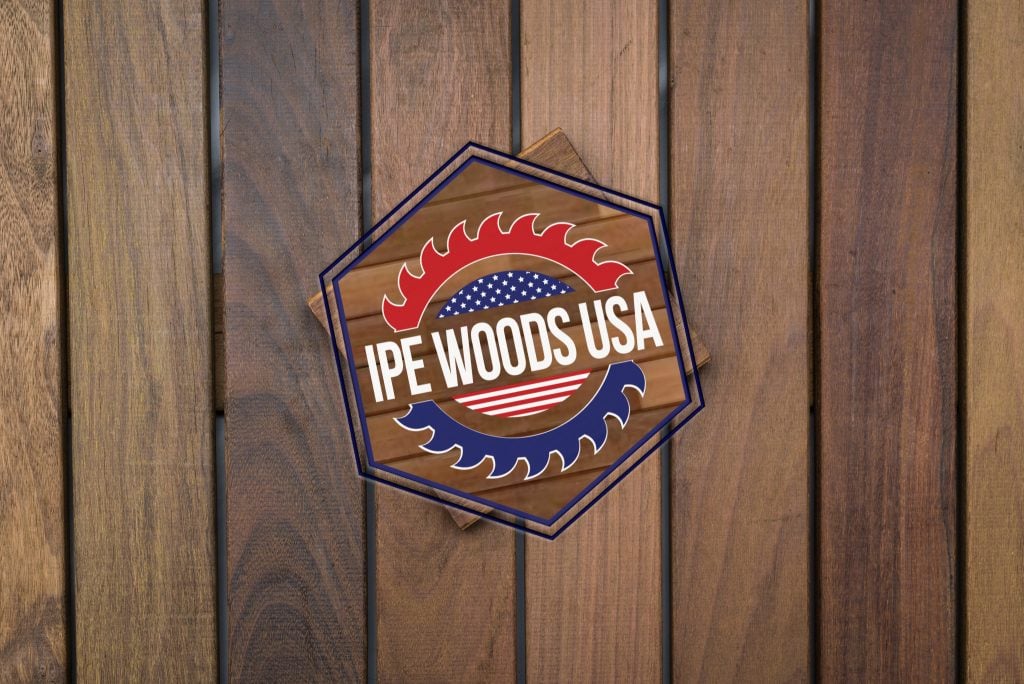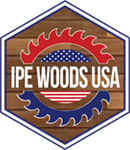Since there is no protection against direct sunlight when using Ipe outdoors, the closeness to excess moisture implies that an air-dried Ipe is the ideal wood.
There is no doubt concerning the use of Ipe for deckin g is the most common use. When Ipe is used for decking it has E4E (eased four edges) and is S4S (smoothed four sides), this has to be performed on the four sides and four edges of Ipe respectively to curb splintering and sharp edges for the decking use. This leaves a little edge curved to make it softer to the touch. Based on the manner in which our clients want to use Ipe for decking, it is sometimes required to groove for clip fasteners. However, in most cases, such tasks are what we do with the wood before shipment. Even pregrooved ipe has eased-edges. You can request square-edge but that requires an additional milling procedure.
g is the most common use. When Ipe is used for decking it has E4E (eased four edges) and is S4S (smoothed four sides), this has to be performed on the four sides and four edges of Ipe respectively to curb splintering and sharp edges for the decking use. This leaves a little edge curved to make it softer to the touch. Based on the manner in which our clients want to use Ipe for decking, it is sometimes required to groove for clip fasteners. However, in most cases, such tasks are what we do with the wood before shipment. Even pregrooved ipe has eased-edges. You can request square-edge but that requires an additional milling procedure.
For decking use, we pretty much always default to air-dried Ipe wood which is close to 18% moisture content prior to milling in South America as deck boards. And for exterior use, it is precisely what you will need for a quality and durable decking board. To prevent the effect of various weather conditions such as the sun, temperature changes, or rain hitting hard on your board, it is best advised to properly acclimate.
Although we deal in kiln-dried and roughly sawed Ipe lumber (mostly used in timbers for larger size boards), there is always a low demand for these types compared to air-dried. Most species when kiln-dried is dried to about 6-8% moisture content. But Ipe is different as explained below. Air-Dried products are different and are best used for interior projects. While the species are the same, they are released with a distinct humidity level that is different and typically used for different applications. Due to a different type of treatment, air-dried won’t work for indoor use (it will cause splintering). However, you can use kiln-dried for outdoor use. Also depending on the climate humidity and other factors, choosing one or the other closer to your humidity index can reduce acclimation time.
We certainly sell kiln-dried Ipe decking. But when used for decking, it is a kind of humorous because both the air-dried Ipe and the kiln-dried Ipe are similar materials. Regardless of which one you purchase you will need to review our installation instructions with the most important part being the acclimation of the wood to your specific environment. With this knowledge, you can save some money as AD is a little less expensive than KD. When you choose between the two products as they are both excellent choices for dry or humid weather.
History of AD Ipe and KD Ipe
It used to be that all woods were always air-dried. But currently, the rate of production is alarming, and the seasoning process for lumber is at a faster rate. Hence, the process of kiln-drying has now included decking products for exterior use. The most important point to note here is that in contrast to the lumber used for interior work, Ipe is not kiln-dried to 6-8% moisture content; instead, it is kiln-dried to 10-14% moisture content. Why? Because such a level is enough for eliminating the water without expelling the bound water or solidifying the wood’s cell walls. Since Ipe is so extremely dense Kilning to a lower level comes with the risk of surface cracking. This is when the outside dries at a faster pace than the inside of the wood.
While a wood that can withstand change and all looks like an excellent material, it can be a nightmare — the reason being that you can hardly go against moisture change in the outside environment, particularly a deck which stands as the cruelest place for wood. On the other hand, the most prudent choice is a flexible board that can work hand-in-hand with weather changes such as high moisture during the rainy season or high sun which can dry a wood.
One cogent point to consider is the intensity of sunshine being received by the deck. A deck can be substantially heated by day-long, direct sunshine, which will expel the moisture out, and result in warping. However, you can win this situation by putting down a drier board and properly acclimating first, then focusing on ventilation, and gap spacing. It’s a good idea to leave it for some time on the project. Allow the boards to acclimatize. In a case where your deck is moving down the desert during the summer, naturally, the weather will reduce the moisture content of the decking to a stable point. As long as it is at a stable point with the immediate environment, the decking will concede and recede moisture as the season changes. In a case like this, gap-spacing selection and focusing to stabilize the airflow will assist your course significantly more than lower moisture content.
For this reason, air-dried decking is commonly found since it is mostly believed that high moisture content is closer to a stable point in almost every part of the USA. But for either KD or AD you need to acclimate properly. For those staying in dry climates or under open southern exposed decks, you will hear people (even knowledgeable contractors) say that kiln-dried decking should be used. However, this is simply not true they are the exact same thing if allowed to acclimate properly.
Calling AD and KD “The Same Thing”?
Calling the two kinds of material the same thing is a fault of the lumber industry. Kiln-dried lumber usually has 6-8% moisture content, and as mentioned earlier, roughly sawed Ipe is usually moved at this level too. To differentiate between the 10-14% Ipe and the decking air-dried with higher moisture content you can use a moisture meter. They are not made the same but they can end up nearly identical during acclimation.
At Ipe Woods USA, we move a large amount of Ipe in different sizes meant for either decking boards, posts, balusters or joists. Also, we run both the air-dried Ipe decking and the kiln-dried Ipe decking.
If you are having a difficult time in your subsequent project concerning decking material in an extreme climate, just contact us and we will be happy to help. Without a doubt, for as long as possible, both the kiln-dried and the air-dried decking will remain in a similar and overlapping range with Ipe. Be sure to have it included on your invoice if you are needing one or another specifically.
*****IMPORTANT LEGAL STUFF*****
- The information contained on this site is meant to be used as a reference only and is not to be interpreted as a guarantee of any sort.
- To properly install your deck, we recommend that you work with an experienced professional. All information on the site is only generalized recommendations. We are not and will not be held liable for improper installation, for any reason, including but not limited to information inaccuracy. Again, consult a professional for all things related to installation.
